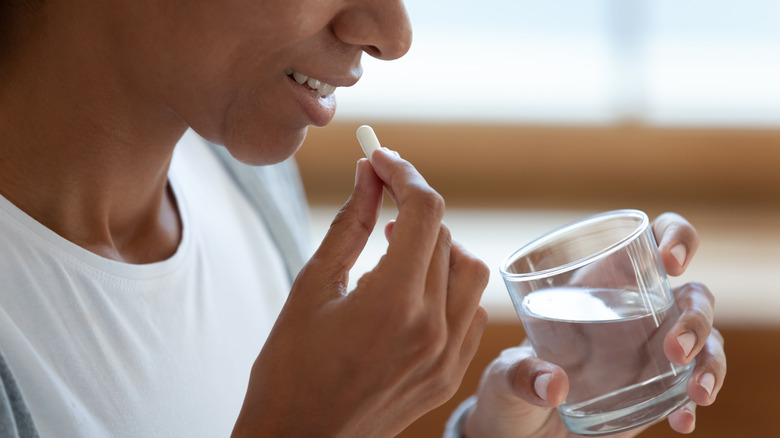How To Treat A Mild Fever At Home
A mild fever could indicate an infection or illness, such as the seasonal flu, but it's not necessarily something to worry about. If you have this symptom, your body temperature will reach 100.5 to 102.2 degrees Fahrenheit. Anything above these values is considered a moderate- or high-grade fever, according to clinical research presented in the Journal of Infection and Public Health.
As the scientists note, aside from an infection, some people may also experience a fever due to trauma or inflammation. However, the febrile response is a normal part of your body's defense system — and not an illness in itself. For example, a persistent fever may indicate a urinary tract infection (UTI) or a form of pneumonia. Intermittent fevers, on the other hand, are usually associated with pus-producing infections, tuberculosis, or other more serious conditions.
Generally, a low-grade fever isn't a cause for concern unless it occurs in infants, explains OSF HealthCare. You might also need to call a doctor if your fever is accompanied by more severe symptoms, such as persistent vomiting or confusion. Otherwise, you should be able to treat it at home. A fever of up to 102 degrees Fahrenheit doesn't even require medication, says the Mayo Clinic. But if your body temperature rises above this value, there are steps you can take to bring it down.
What's the best way to treat a mild fever?
A mild fever shouldn't interfere with your daily routine, but you may feel more tired than usual. Treatment depends on what other symptoms you have — and what caused them in the first place. For example, it's not uncommon to experience a slight increase in body temperature after getting a flu shot or other vaccines, explains the HSE. In this case, you shouldn't take acetaminophen, as it may interfere with the vaccine. Mild fevers may also be due to strenuous exercise, stress, or outdoor activities in hot weather, says Insider.
The first thing you should do is drink plenty of water. Ideally, try to consume at least half a gallon of fluids within 24 hours, suggests the HSE. If possible, take a longer nap and sleep more at night so your body can recover. You may also apply a cold compress on your face and neck to bring your temperature down. A low-grade fever above 102 degrees Fahrenheit may be treated with ibuprofen, aspirin, or other non-steroidal anti-inflammatory drugs, according to the Mayo Clinic.
Sometimes mild fevers are due to bacterial infections, such as stomach bugs, and require antibiotic treatment, explains a 2019 review published in the Clinical Manual of Fever in Children. In such cases, you can try to treat the fever at home, but you'll still need to call your doctor and take medications as prescribed. Also, seek medical help if the fever persists or worsens.


